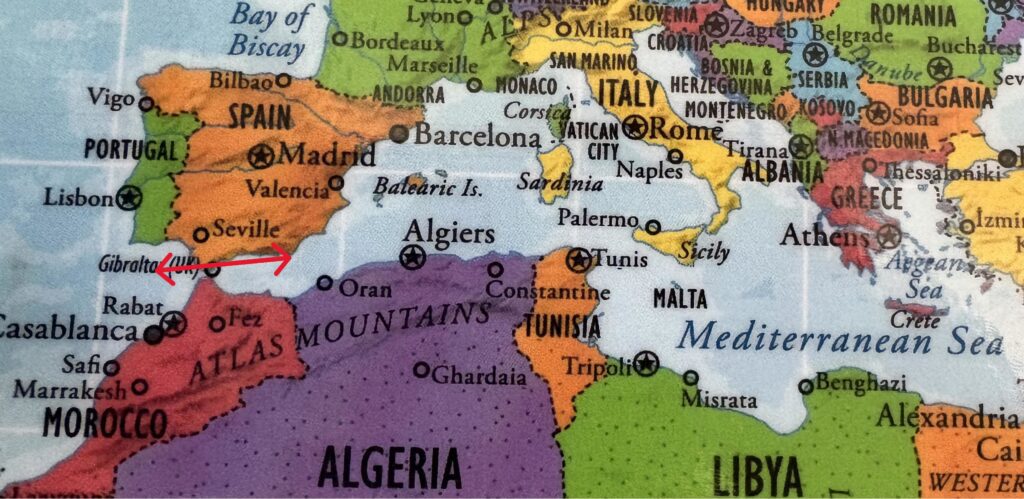#3 The Strait of Gibraltar – Atlantic-Med Gateway

Introduction: The Strait of Gibraltar is a critical global chokepoint between the Atlantic Ocean and the Mediterranean Sea. This vital passage, separating Europe (Spain and Gibraltar) from Africa (Morocco), is an intensely busy corridor where international shipping converges in a uniquely challenging environment.
Geography – The Gateway: This pivotal maritime passage connects the vast Atlantic with the enclosed Mediterranean. At its narrowest, it spans approximately 8-9 miles (13-14 kilometers) and ranges in depth from 980 to 2,950 feet (300 to 900 meters). The Strait is characterized by extreme currents and often powerful, unpredictable winds, creating challenging conditions for navigation.
Key Facts & Importance: The Strait of Gibraltar is a constant hub of global maritime activity:
- High Traffic Volume: Around 100,000 vessels transit these waters annually, averaging over 300 ships per day, making it one of the world’s most transited sea routes. This includes all types of commercial shipping, naval vessels, and cross-strait ferries.
- Economic & Energy Artery: As the sole natural maritime link to the Mediterranean, it is critical for global trade, carrying significant volumes of fuels, metals, and other essential commodities worldwide.
- Strategic Chokepoint: Its pivotal geographical position, splitting continents, makes it a vital junction for global maritime trade and supply chains. Any disruption or blockade would have massive global economic repercussions.
Maritime Hazards & Modern Challenges:
- Extreme Congestion & Navigational Complexity: The immense volume and diversity of vessel types navigating a relatively narrow and busy channel creates a constant, high risk of collisions. This challenge is significantly compounded by the unique interplay of strong, often opposing currents and powerful, unpredictable winds. These inherent natural forces, combined with the high density of traffic and potential submerged hazards, demand continuous vigilance from mariners despite robust monitoring systems and established traffic separation schemes.
